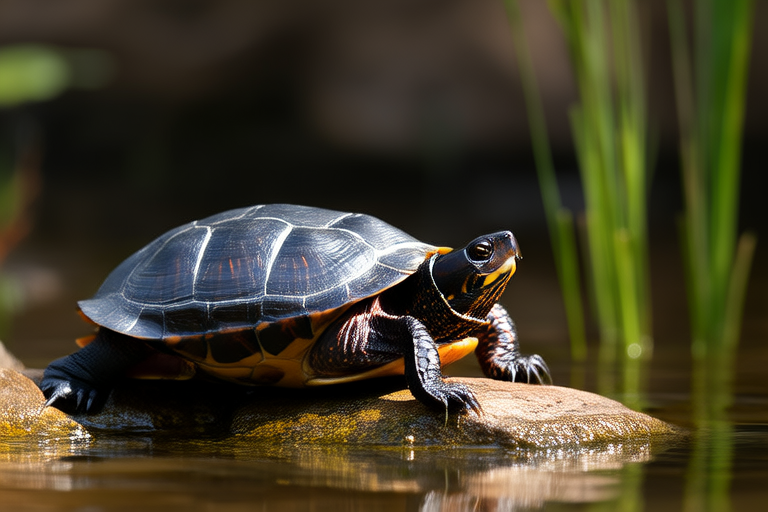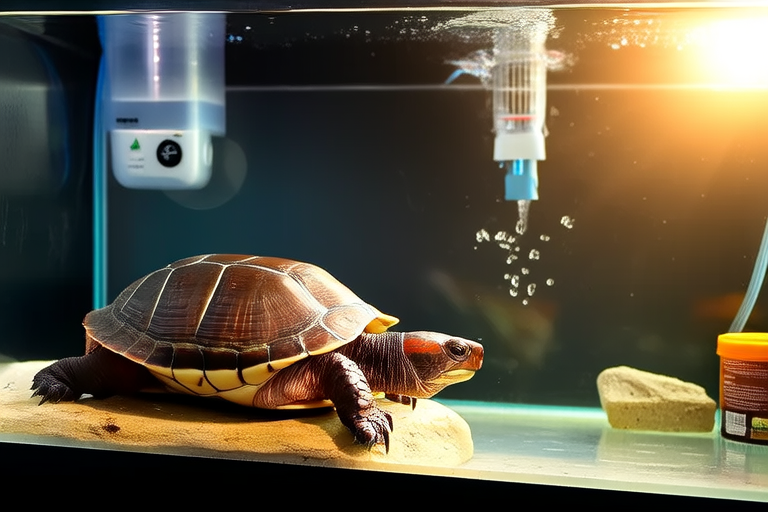
Everything You Need to Know Before Adopting a Red-Eared Slider as a Pet
Introduction:
Red-eared sliders (Trachemys scripta elegans) are one of the most popular turtle species kept as pets. They are known for their distinctive red markings behind their eyes and their relatively low-maintenance care requirements. However, owning a red-eared slider comes with significant responsibilities that potential owners must understand before bringing one home.
Habitat Requirements
Red-eared sliders require a spacious, well-maintained aquatic environment to thrive. The enclosure should be large enough to accommodate their growth, which can vary depending on the age and size of the turtle. For hatchlings, a 20-gallon tank is sufficient, but adult turtles need at least 40 gallons per turtle. The tank should have a water depth of approximately 18 inches to allow swimming. A basking area with a UVB light source is essential for proper shell development and overall health.
The water temperature should be maintained between 75 and 80 degrees Fahrenheit, while the basking area should reach around 90 degrees. This can be achieved by using submersible heaters and a heat lamp. Additionally, regular water changes and filtration systems are necessary to keep the water clean and free from harmful bacteria.
Diet
A balanced diet is crucial for the health of your red-eared slider. Their diet should consist of commercial turtle pellets, fresh vegetables like romaine lettuce, kale, and dandelion greens, and occasional protein sources such as earthworms or feeder fish. It’s important to avoid feeding them iceberg lettuce or bread, as these can cause digestive issues.
Vitamin and mineral supplements may also be required to ensure they receive all the necessary nutrients. Calcium and vitamin D3 are particularly important for shell and bone development. Always consult with a veterinarian experienced in reptile care to determine the appropriate supplementation for your turtle.
Lifespan
Red-eared sliders can live anywhere from 20 to 40 years in captivity, provided they receive proper care. Factors such as genetics, diet, and environmental conditions play a role in determining their lifespan. With responsible ownership, it’s not uncommon for these turtles to outlive their owners, making it essential to consider long-term commitments when adopting one.
Health Concerns
Common health issues among red-eared sliders include respiratory infections, shell rot, and metabolic bone disease. Respiratory infections often result from poor water quality or inadequate temperatures. Shell rot occurs due to injuries or prolonged exposure to dirty water. Metabolic bone disease is caused by calcium deficiency and can lead to soft shells and deformities.
To prevent these issues, maintain clean water, provide appropriate heating, and offer a balanced diet rich in calcium and vitamins. Regular veterinary check-ups are also recommended to catch any potential problems early.
Legal Considerations
In many countries, there are regulations regarding the import, sale, and ownership of red-eared sliders. Some areas prohibit keeping them as pets due to concerns about their impact on native ecosystems if released into the wild. Research local laws before purchasing or adopting a red-eared slider to ensure compliance.
Time Commitment
Owning a red-eared slider requires a substantial time commitment. Regular maintenance of the tank, including water changes and cleaning, is necessary to ensure a healthy environment. Feeding schedules should be consistent, and monitoring for signs of illness or injury is crucial.
Additionally, social interaction with your turtle can strengthen your bond. While they may not exhibit the same level of engagement as other pets, providing stimulation through gentle handling and enrichment activities can enhance their well-being.
Setting Up the Aquatic Environment
Creating an ideal aquatic environment involves several steps. First, choose a suitable tank size based on the turtle’s current and future size. Next, install a reliable filtration system to maintain water cleanliness. Submersible heaters help regulate water temperature, ensuring optimal conditions for your turtle.
The basking area should be designed with safety in mind. Use a secure platform with a heat lamp and UVB light to mimic natural sunlight. Ensure that the lighting is positioned correctly to avoid burns or overheating. Proper setup not only promotes physical health but also supports mental stimulation.
Common Behaviors and Interactions
Red-eared sliders are generally docile creatures that enjoy basking in sunlight. They may display curious behavior when approached, especially if they associate human presence with food. However, individual personalities vary, so patience is key when building trust.
Handling your turtle gently and consistently can help establish a positive relationship. Avoid sudden movements or loud noises that might startle them. Over time, many red-eared sliders become comfortable with regular interaction, making them enjoyable companions.
Conclusion:
Adopting a red-eared slider as a pet is a rewarding experience that comes with significant responsibilities. Understanding their unique needs and committing to providing proper care will ensure both you and your turtle enjoy a long and healthy life together. By researching thoroughly and preparing adequately, new owners can make informed decisions and provide the best possible home for their new pet.






